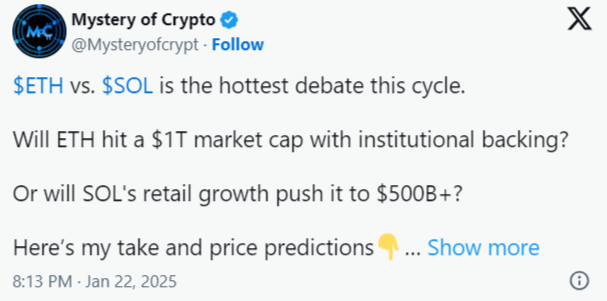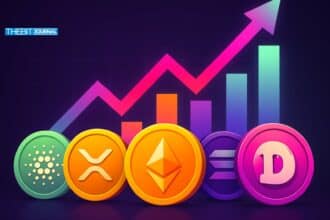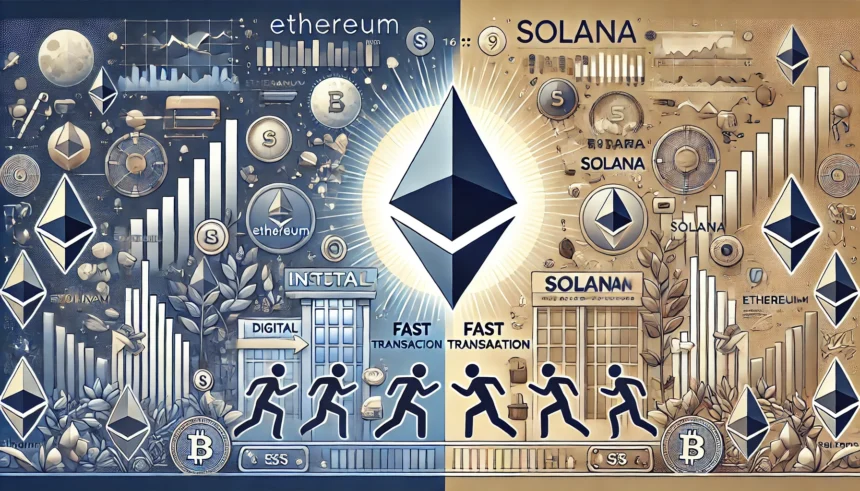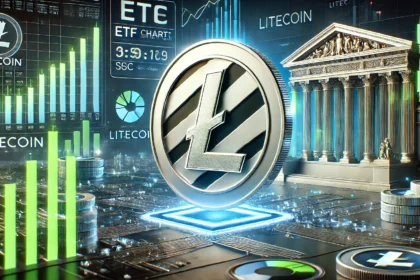As the race for crypto dominance heats up, Ethereum and Solana are emerging as two leading contenders. While Ethereum’s institutional support and established infrastructure set a solid foundation, Solana’s low fees and rapid transaction speeds make it a strong alternative. Could SOL eventually overtake ETH? Here’s a closer look at their strengths and weaknesses.
Ethereum: The Institutional Giant
Ethereum’s rise has been bolstered by significant institutional backing. With over $5 billion in investments from major players like BlackRock and Fidelity, ETH enjoys a level of trust that’s unmatched in the crypto space. Additionally, the network’s Layer 2 solutions like Arbitrum and Optimism are helping Ethereum maintain its edge in DeFi, NFTs, and blockchain gaming.
From a tokenomics perspective, Ethereum’s reduced exchange supply and high staking rates contribute to its appeal. The consistent staking of 34 million ETH has limited market availability, making it a favorite among long-term investors. However, the high transaction fees and relatively slower price growth have led some retail investors to explore other options, like Solana.
Solana: The Retail-Friendly Contender
Solana’s appeal lies in its ability to attract retail users with its low fees (around $0.45 per transaction) and high scalability. Its unique Proof-of-History (PoH) consensus mechanism enables over 1,000 transactions per second (TPS), far outpacing Ethereum in speed and cost-efficiency.
Solana’s community-driven approach has fueled its growth, with projects like Jupiter and Kamino expanding its ecosystem. The network’s reputation as the “degen-chain” highlights its appeal to retail traders seeking quick and cheap transactions. Despite this, Solana faces challenges such as high token inflation and slower institutional adoption compared to Ethereum.

The Road Ahead: ETH vs. SOL
Market analysts predict that Ethereum’s institutional inflows could push its market cap to $1 trillion in the current cycle. On the other hand, Solana’s retail-driven growth could propel its valuation to $500 billion or beyond. Both networks have strong growth potential, but Ethereum’s established position and backing make it a safer long-term bet.
Conclusion
The battle between Ethereum and Solana represents a broader conflict between institutional and retail-focused blockchain solutions. Ethereum’s established infrastructure and backing give it an edge in the long term, while Solana’s speed and accessibility cater to a growing retail audience. For investors, the choice between the two depends on their risk tolerance and investment goals.
Stay tuned to The Bit Journal for more updates and in-depth analysis of the cryptocurrency market.
- https://twitter.com/Thebitjournal_
- https://www.linkedin.com/company/the-bit-journal/
- https://t.me/thebitjournal
Follow us on Twitter and LinkedIn and join our Telegram channel to get instant updates on breaking news!






























